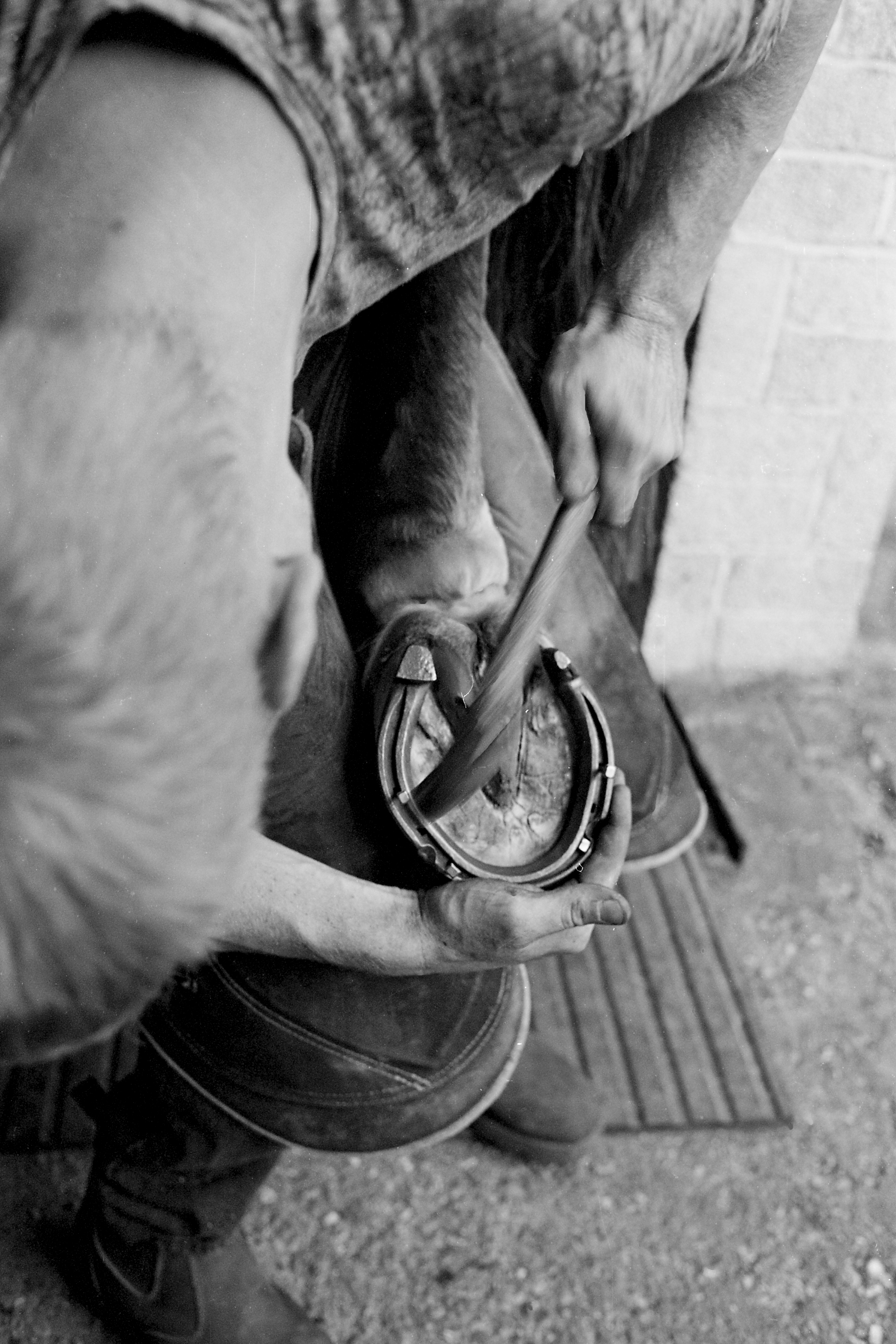














Your Custom Text Here
#2 The Competition Farrier
Until the rise of motorised transportation one of the most common sights of a traditional craftsman was the farrier, a skill set with similarities to the various smiths, particularly those of the blacksmith a farrier would smite iron and steel from a straight rod into a precisely shaped broken hoop unique to both the horse and its needs.
The traditional blacksmith would often perform this task but where the farrier differs from the other smiths, is the understanding of how the shape of the shoe affects the working of the animal. In modern society many farriers no longer use these full skills, opting for the financial and time production of premade shoes, shaping these through the final stages for the horse. However through competing their skills against each other, the traditional skills survive.
Working in pairs as a team of four, each pair are to produce: two shoes and fit to a horse, and make a third shoe to be identical to a shoe presented by the judges within ninety minutes, before handing over to the other pair. The challenges faced here are not only the time constraints, but also a coomunication between the working farriers that is largely visual due to the incredible noise that is a blend of clanging iron, roaring gas a fire in the furnace, clatter of dropping tools, and the sharp his of metal in water, or touching the bone of the horse’s hoof.
These smiths come together from across Britain and work around each other, coming together to work in tandem on a single shoe separating to measure and cut metal, working until the last second to shoe a horse amongst a the light of a large forge and small window, three dogs, four smiths and the horse of the Leader of the Hunt; never getting in each other’s way.
This study is part of The British Heritage Project, and aims to celebrate traditional crafts and craftsman within Britain.
#2 The Competition Farrier
Until the rise of motorised transportation one of the most common sights of a traditional craftsman was the farrier, a skill set with similarities to the various smiths, particularly those of the blacksmith a farrier would smite iron and steel from a straight rod into a precisely shaped broken hoop unique to both the horse and its needs.
The traditional blacksmith would often perform this task but where the farrier differs from the other smiths, is the understanding of how the shape of the shoe affects the working of the animal. In modern society many farriers no longer use these full skills, opting for the financial and time production of premade shoes, shaping these through the final stages for the horse. However through competing their skills against each other, the traditional skills survive.
Working in pairs as a team of four, each pair are to produce: two shoes and fit to a horse, and make a third shoe to be identical to a shoe presented by the judges within ninety minutes, before handing over to the other pair. The challenges faced here are not only the time constraints, but also a coomunication between the working farriers that is largely visual due to the incredible noise that is a blend of clanging iron, roaring gas a fire in the furnace, clatter of dropping tools, and the sharp his of metal in water, or touching the bone of the horse’s hoof.
These smiths come together from across Britain and work around each other, coming together to work in tandem on a single shoe separating to measure and cut metal, working until the last second to shoe a horse amongst a the light of a large forge and small window, three dogs, four smiths and the horse of the Leader of the Hunt; never getting in each other’s way.
This study is part of The British Heritage Project, and aims to celebrate traditional crafts and craftsman within Britain.
British Heritage Project #2: The Competition Farrier
©Tom Warland 2025